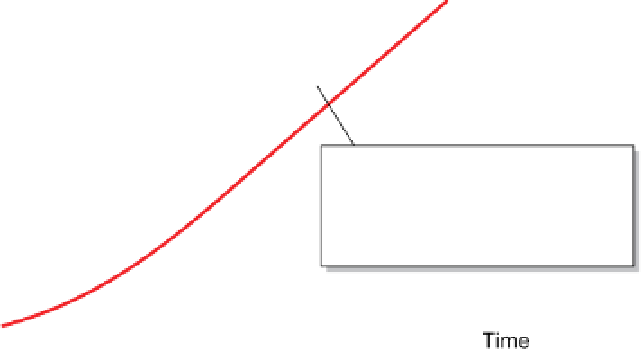Game Development Reference
In-Depth Information
FeedBacK Based On reLaTive scOres
During Marc LeBlanc's talk on feedback mechanisms in games at the Game Developers
Conference in 1999, he described two alternate versions of basketball. In “negative
feedback basketball,” for every five points that the leading team is ahead, the trail-
ing team is allowed to field one extra player. In “positive feedback basketball,” this
effect is reversed: The leading team is allowed to field one extra player for every
five points they are ahead. The effects of using the difference between two players
to create a feedback mechanism are slightly different from using absolute values to
feed this mechanism: The effects of the feedback mechanisms affect the
difference
between the players, not their absolute resources. This can produce some counter-
intuitive effects. The economic chart of negative feedback basketball, for example,
shows the lead of the better team settling on a stable distance at which the lack of
the skill of the trailing team is offset by the extra players they can field (
Figure 4.9
).
FIGURe 4.9
score graph of
negative feedback
basketball
dynamic equilibrium
The equilibrium that is created by a negative feedback mechanism that is fed by the dif-
ference in resources between two players is a dynamic equilibrium: it is not set to a fixed
value but is dependent on other, changing factors in the game. You will find that most
interesting applications of negative feedback in games are dynamic in this way. making
the equilibrium of a negative feedback loop dynamic by making it dependent on the rela-
tive fortune of multiple players, or other factors in the game, is a good way to move away
from a too predictable balance created by a nondynamic equilibrium. With experience,
knowledge, and skill, you will be able to combine several factors to compose dynamic
equilibriums that are periodic, are progressive, or follow another desired shape.












